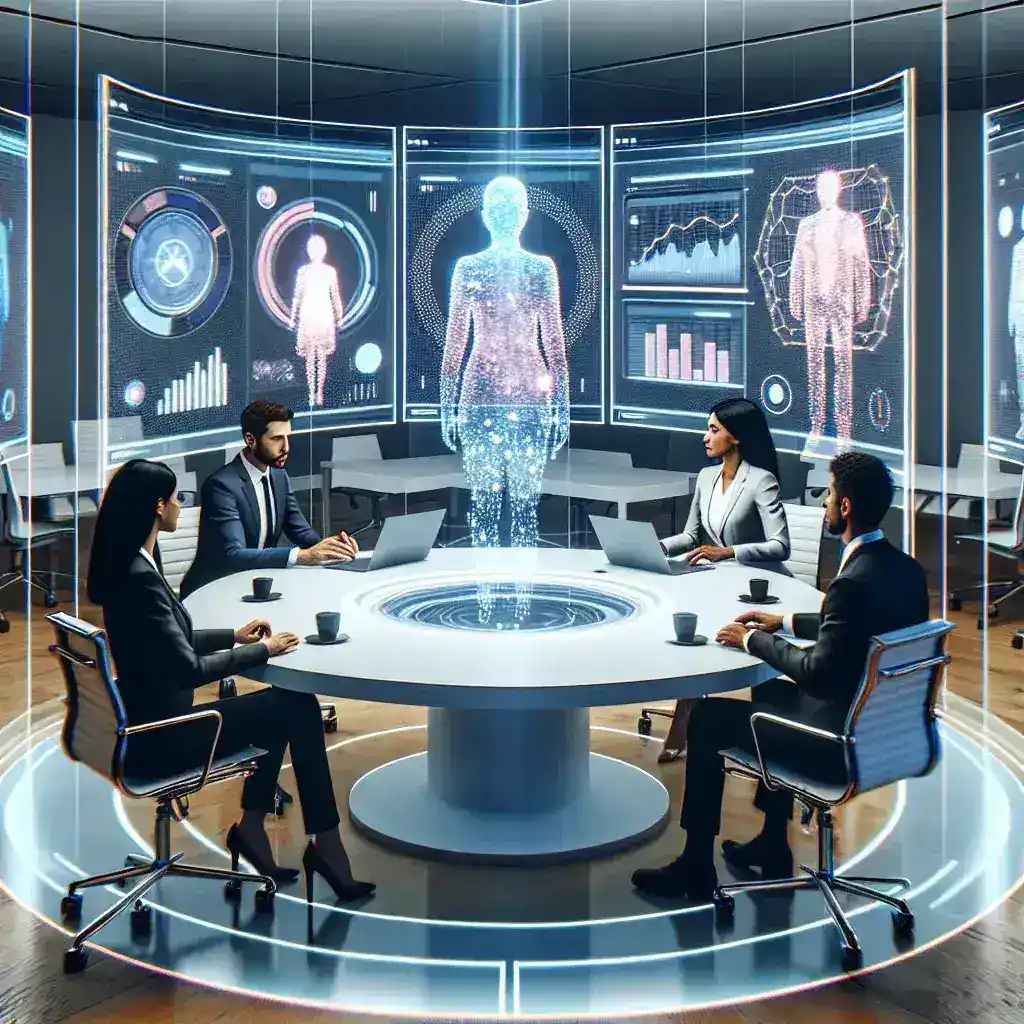Introduction
The digital landscape of business communication has undergone significant transformations in recent years. Zoom Video Communications, a leader in video conferencing technology, has taken a bold step forward by testing immersive 3D avatars for business meetings. This innovation aims to enrich virtual interactions, making them more engaging and lifelike. In this article, we will delve into the concept of 3D avatars, their historical context, current implications, pros and cons, and future predictions for business meetings.
Understanding 3D Avatars
3D avatars are digital representations of individuals, often used in various virtual environments, including gaming, social media, and now, business communication. These avatars can mimic physical gestures, facial expressions, and even voice nuances, providing a more authentic interaction experience compared to traditional video conferencing.
A Brief History
The concept of digital avatars is not new. Since the early 2000s, avatars have been utilized in online gaming and virtual worlds. However, their application in professional settings has only recently gained traction. With the rise of remote work and virtual collaboration tools, companies began exploring innovative ways to enhance online interactions.
The Evolution of Zoom
Zoom, founded in 2011, quickly became a staple for remote communication, especially during the COVID-19 pandemic. The platform’s user-friendly interface and reliable performance contributed to its rapid growth. As users became accustomed to virtual meetings, the demand for more engaging tools led Zoom to consider the integration of 3D avatars.
The Testing Phase of 3D Avatars
Zoom’s current testing phase for immersive 3D avatars seeks to transform the way participants interact during meetings. By utilizing technology such as augmented reality (AR) and virtual reality (VR), Zoom aims to create a more dynamic and interactive meeting environment.
How the Technology Works
The immersive 3D avatars are designed to closely replicate users’ physical presence. Participants can customize their avatars, selecting features such as hair, clothing, and even accessories. Using advanced motion capture technology, the avatars can reflect real-time movements and expressions, enhancing the sense of presence in virtual meetings.
User Experience and Interaction
Imagine joining a meeting where your avatar gestures and responds to others in real-time. This level of interaction could significantly reduce feelings of isolation often associated with remote work. Users can engage in discussions, collaborate on projects, and share ideas more effectively, fostering a sense of community.
Pros and Cons of Immersive 3D Avatars
Pros
- Enhanced Engagement: The visual representation of avatars can capture attention better than traditional video feeds.
- Personalization: Users can create avatars that reflect their personalities, making interactions more relatable.
- Reduced Fatigue: Avatars may help alleviate video call fatigue by offering a fresh perspective on virtual meetings.
- Improved Communication: Non-verbal cues transmitted through avatars can enhance understanding and collaboration.
Cons
- Technical Limitations: The technology required for immersive 3D avatars may not be accessible to all users.
- Learning Curve: Users may need time to adapt to new features and functionalities.
- Privacy Concerns: Customization may raise privacy issues if users are concerned about digital representations being misused.
Future Predictions for Business Meetings
As Zoom continues to refine the 3D avatar experience, several potential trends may emerge in the realm of virtual meetings:
- Increased Adoption: As businesses recognize the benefits of engaging meetings, the adoption of immersive avatars may become widespread.
- Integration with AI: The future may see AI-driven avatars that can respond intelligently during discussions, making meetings more productive.
- Broader Applications: Beyond meetings, immersive avatars could find applications in training, workshops, and collaborative projects.
Case Studies and Real Examples
While Zoom is still in the testing phase, several companies have successfully implemented avatar technology in virtual environments. For instance, Roblox and Fortnite have shown how avatars can effectively facilitate communication and social interaction among users. These examples suggest that immersive avatars could similarly enhance professional communication.
The Cultural Relevance
The rise of remote work has altered workplace dynamics and culture. Immersive 3D avatars could play a significant role in reshaping how teams collaborate, bridging gaps created by physical distance. As organizations become increasingly global, the ability to connect in a more personal way through avatars may foster better relationships among team members.
Conclusion
Zoom’s exploration of immersive 3D avatars for business meetings presents an exciting opportunity to reinvent virtual communication. While challenges remain, the potential benefits of enhanced engagement, personalization, and improved communication are compelling. As technology advances, we may soon witness a new era of immersive virtual meetings that not only enhance productivity but also build stronger connections among teams.
Call to Action
For businesses looking to stay ahead in the evolving landscape of virtual communication, keeping an eye on Zoom’s developments in 3D avatars may be worthwhile. Embracing innovative tools can lead to more effective collaborations and foster a more engaging work environment.




Leave a Reply